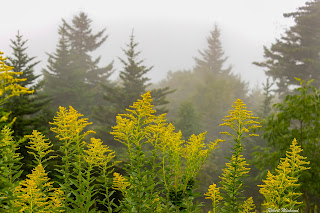Rocket Launch Photography: A Backstory
I thought I’d share a few of the challenges that went into taking this shot and what you will need to consider to photograph a rocket launch.
First, patience. I took this image from Playalinda Beach, adjacent to the Kennedy Space Center. It takes an hour for me to drive there, which includes 40 minutes on suicide alley, I-95. In order to beat the crowd, I left home in time to arrive three hours prior to launch. I managed to stake out a good spot on the boardwalk between the parking lot and the beach and began my wait in the 90 degree heat. The countdown advanced all the way to T-minus 6 seconds at which point the launch was scrubbed for technical reasons. Damn! Packed it all up and headed home.
Two days later, I did it all over again. T-minus 6 and Spacex shut her down...again! That’s it. I’m done. I’m not doing this again.
Three days later, a little bird was whispering in my ear “you really don’t want to miss this”. So, off I went for round three. Finally, success! I had invested 300 miles total on the road, three days of my life, and 9 hours in the hot Florida sun. In 45 seconds, it was over, but I had my shot.
Second, a good location. You may not realize that the closest you will ever get to a launch is 2-½ miles away and that is from one site, the pad 39 gantry for a launch on pad 40, used by the United launch Alliance. The next closest location is also from the pad 39 gantry for a pad 41 launch, used by SpaceX. That distance is 3 miles or so. The best public site is from Playalinda beach to pad 39A, also used by SpaceX, a distance of 4 miles. Every other public site is in the 7-8 mile range. To get to the first two locations, clearly the best options, requires admission to the Kennedy Space Center Visitors Complex plus a second ticket for a bus trip out to the gantry. Attendance is limited. Tickets are sometimes hard to get and can sell out in minutes. Once you board the bus, if a launch is scrubbed (50-50 odds) you do not get a refund. It is a real challenge to get the best seats in the house. Oh, and the light often works against you depending on location, launch pad, and time of day.
Third, the right equipment. You would think all you need is a long lens. But, I have found heat distortion to be a real issue and have done much better with a mid-range telephoto. Since I use a 45 megapixel camera, I have lots of cropping options in Photoshop.
By far, rocket launches have proven to be my biggest challenge, although most exciting! I have been lucky enough to see a dozen or so launches and they never get old. But in spite of my enthusiasm, I have exactly 2 images that I consider worthy results. One is the Falcon 9 launch above which, ironically, was the very first launch I got to see.
Thanks for visiting and maybe I’ll see you at the Kennedy Space Center!



Congratulations on the new website and blog!
ReplyDeleteThank heaven for little birds.
ReplyDeleteAnticipation… disappointment. Repeat. And repeat. The difficulties you outline are exactly what makes viewing a rocket launch so special. Add in the spectacle of the light show, the rumbling of the engines, and the sensation of the shock wave and it becomes sheer technical entertainment. To then have documentation is testament to your persistence. If it were easy to get the shot, everyone would be doing it. The spectacular end result is proof that your patience is rewarded.
MRP